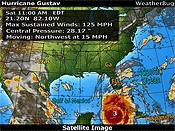The Education Code, Part 3
 Friday, June 28, 2013 at 08:22PM
Friday, June 28, 2013 at 08:22PM Common Core, two words that rattle many parents’ nerves from sea to shining sea; however, there are two other words that should shake us to our very core: Education Code. In the February 2013 Ventura County held “Threat Assessment: Prevention of Targeted Violence in Schools,” the education codes plays a far bigger role in defining acceptable words and behaviors, posing an insidious threat to every child and family in ways we have never imagined.
Most worrisome, boys are already diagnosed with ADHD, 13.2% v. girls (5.6%) according to the Center for Disease Control (CDC) in Atlanta, GA because of their actions. Like moving. Now, their very boy-like pushing, shoving, joking sarcastically and name-calling will signal red-flags. Everything that define boys in their formative years may well indict them. Or worse. It’s no wonder they are twitchy; boys are not allowed to duke it out anymore but if they did, odds are they won’t grow up to become Adam Lanzas or Timothy McVeighs.
Behavior and words not the only warning signs for school officials to pounce on: drawings and other creative outlets with persistent or intense violent themes (p. 13); violent attire (camouflage fatigues, violent message t-shirts; inappropriate possession of violent literature and information pertaining to known or suspected hate groups; rebellion against school authority; perceived injustices; violent music and other media are all up for grabs. Camouflage pants? In fact, the bolded text in the page 4 box reads FAILURE TO ACT: “The Secret Service says when a child indicates that he is thinking about committing a violent act, and an adult does not take decisive action to stop him, the child sees this as getting ‘PERMISSION TO PROCEED.’” Excuse me but what does the Secret Service have to do with public school?
American English is chockfull of rich colloquialisms, expressions and idioms that we use daily. Regionally. Generationally. Automatically. They spill out of our mouths as much a part of the culture as is our American fabric and our Judeo-Christian heritage and now, if a student says, does, draws, wears or reads something perceived as a “safety threat,” (s)/he well will be given a first warning by the requisite administrator. The parents will be also addressed and asked outright “Do you have a firearm in the home?”
Does it all come down to one big dystopian reality? A student stands up for him/her self after a false accusation by a K-16 authority figure and finds him/her self labeled as defiant. A kid says or does an impulsive act and now it’s an act of violence with a diagnosis of ADHD on the side. Will speaking up with a different POV now be assessed as a threat? And what really is a threat? Apparently, a lot more than we knew. Who and what a threat is will be determined solely by school administrators according to our sheriffs and the document. Good luck if principal doesn’t like your kid. Or you. And worse, kids lie. Now, one kid doesn’t like another and can now “anonymously” report an incident for which no further investigation is required? By the way, there is no second warning. Real or perceived, if your son or daughter is anonymously reported being the culprit or being in the same room as the culprit(s), (s)/he is considered part of the problem. In a second “incident,” the appropriate public school administrator will write up your child and contact law enforcement for further “investigation” of the family.
Welcome to the police state. Literally.
Sources for “The Education Code” parts 1, 2 & 3.
i. Los Angeles Unified School District’s 2011 Quick Reference Guide for Threat Assessment & Management threat assessment and management (School Mental Health, Student Health & Human Services).
ii. California Education code, http://www.leginfo.ca.gov/.html/edc_table_of_contents.html,
iii. Threat Assessment, Prevention of Targeted Violence in Schools, February 2013, Office of Education, Ventura County
iv. California Threat Prevention and Intervention Strategies1, Diana Browning Wright, DCS 2002
v. Ventura County Sheriff’s Office Threat Assessment Plan, February 2013, Pentis, Fryhoff
vi. Threat Assessment Guidelines, Attachment VII.a., p. 1-15; VII.b.; VII.c., p. 1-14; VII.d., p. 1-15; VII.e.
vii. Crisis Resource List, 2011-2012, School Mental Health – LAUSD, Crisis Counseling & Intervention Services
viii. Sonoma County School Crisis Response & Recovery Resource Guide, November, 2012, Revised.
ix. Sonoma County School Crisis Response & Recovery Go-To Guide, April 17, 2012, Revised; Cynthia C. Moore, LCSW, Melinda K. Susan, MA, NCSP
x. Transient or Substantative Threats? (PPT adapted from PENT website)
xi. Post Test-Threat Scenarios and Answers to Post Test-Threat Scenarios developed by Dewey Cornell, University of Virginia with input from Diana Browning-Wright, CDE-DCS
-------------------------------------------------------------------------
 Merrill Hope
Merrill Hope
Behind the Common Core: The California Education Code
Common Core’s predecessor under the Bush administration “No Child Left Behind” also mandated its own safe school planning (see “Development of the California School Climate and Safety Survey (CSCSS) – Short Form” by Michael J. Furlong, Jennifer L. Greif, Michael P. Bates, Angela D. Whipple, and Terese C. Jimenez – University of California, Santa Barbara; and Richard Morrison Ventura (CA) Unified School District, March 25, 2004). CSCSS read: “safe school planning is essential to creating safe schools and is required by the Federal No Child Left Behind legislation and implemented via district local education action plans.”
Implementation was carried out “venue by venue through continuous monitoring and perpetual evaluation and re-evaluation per campus per student.” In fact, CSCSS was a self-administered questionnaire created to measure general school climate and personal safety experiences in an elementary, middle, and high school format that stated: “These most widely used school safety instruments were originally developed… to assist in the creation and monitoring of national trends of school violence using a public health model. In this model, it is important to accurately estimate base rates of risk behaviors across the entire population in order to evaluate trends over time. It is less critical that the instruments accurately assess each individual student’s experiences.”
Now, under the Common Core in California, administrators will continue to survey the students through self-assessment forms. It has been explained that this method fulfills the need for school safety measures with student-specific information in a manner that is cheap and easy to administer. Students must rate “statement based” concepts on a scale of 1-5, 1 being “not at all” and 5 being “very much.” One could question if these suppositions might well be “leading” our children up a creek without a paddle.
“I like everyone I meet.”
“I always think before I act.”
“You took 10 field trips, class excursions.”
“Someone made fun of you, put you down.”
“Someone tried to scare you by the way they looked at you.”
“You were voted student of the week four times.”
You like everyone you meet? You always think before you act? Your kid go on 10 field trips a year? You know anyone voted student of the week four times? The implications of how a student answers this classroom administered questionnaires is disconcerting, at best.
Then, there are multiple choice questions. For example,
How many students at your school would you consider to be close friends?
How many teachers are you able to talk about problems you might have?
So, if your kid has only one close friend is (s)/he teetering on the fringes of sociopathy? And If your kid talks to you instead of the math teacher about personal issues is (s)/he isolating? In a world where everything is left to feelings and perception, this kind of questioning leaves far too much wiggle room for “interpretation.”
Furthermore, in the “Identifiable Stabilizing Factors that have a reduction in violence potential,” attachment VII d., page 5 of the 2013 “Threat Assessment: Prevention of Targeted Violence in Schools” unveiled as the action plan one-step-beyond the California Education Code’s attorney styled jargon, there are a host of “stabilizing” categories: family, school and organizational, and individual: participates in extra-curricular activities, demonstrates adequate coping skills and productive anger control, positive social skills, extensive peer group support, and a positive attitude toward authority and intervention. All on the surface make logical sense; however, it’s back to targeted questioning and perception, factors that allow lots of room for misinterpretation, especially since they can only be decoded by an appropriate school administrator (principal, school psychologist) who may or may not have your child’s best interests at heart. Wait until the techno-savvy data mining really kicks in.
Administrators walked away with from this seminar with identifiable warning signs that were wildly left to interpretation and a disconcerting actionable plan – forms, questionnaires, and protocols – plenty of documentation templates. Is this really all about school safety?
______________________________________
Merrill Hope writes for City on a Hill and Save America Foundation. Her "Education Code" series will appear in the August 2013 issue of As A Mom Magazine. Over the years she has inked articles for the Hollywood Reporter and Backstage West. She's married, the mother of a teenager (God help her!) & a dachshund lover. You can follow her at Merrill Hope @outoftheboxmom.











Reader Comments